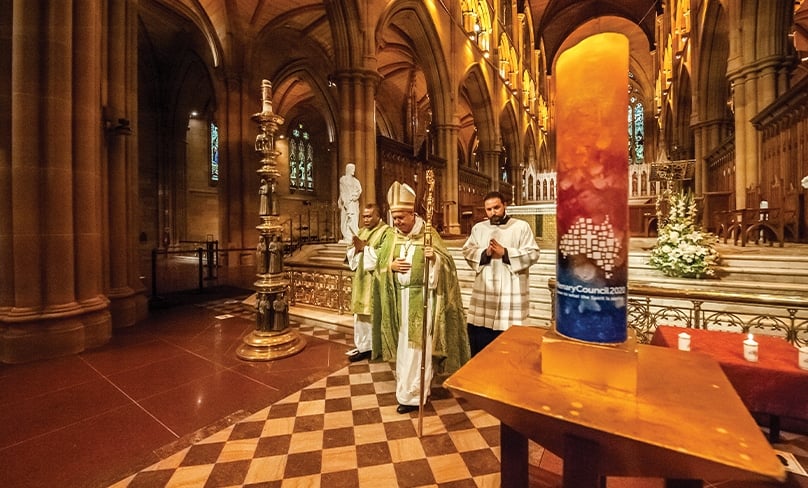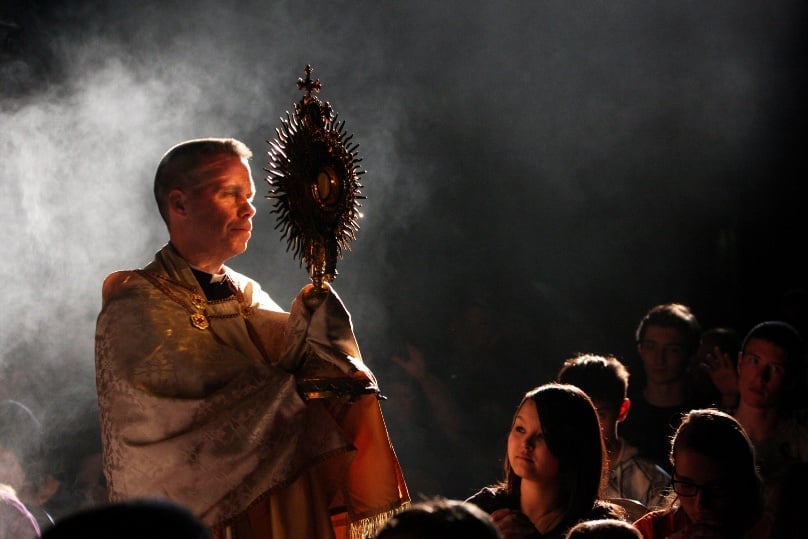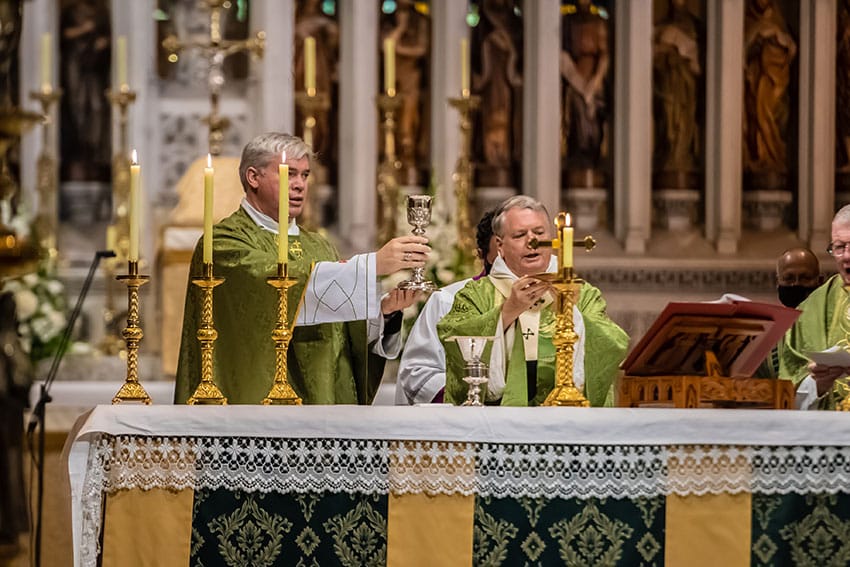
For many Catholics a glance over the Plenary Council’s recently-released Framework for Motions may be the first time they’ve engaged with the process.
For others, committed to an agenda of Church reform since the announcement of the Plenary in 2018, the Framework is the culmination of four years of painstaking effort.
Whatever your level of interest, anyone tuning in now may find themselves asking one question: how did the Church get here?
The Instrumentum Laboris (Feb 2021) is a good place to start when answering this question.
It noted two challenges: that many Catholics did not engage with the listening stage prior to the first assembly, and that the responses they received expressed “different, and often conflicting, understandings of and hopes for the Church and its renewal”.
“And it is precisely here that a significant challenge for the Church in Australia at this time emerges: how are we to ‘catch’ the voice of the Holy Spirit in the midst of the many voices to which we are all listening?” it said.
So one possible answer to the question, “How did we get here?”—This was the Church’s best effort to figure out what to do in a situation of low engagement and enormously divergent worldviews.
The Framework for Motions – an overview
What exactly have we ended up with, then?
In the Framework there are 29 motions, plus one to begin the implementation phase and one to close the Council and resolve the decrees of the 1937 Plenary.
Of the 29, nine are for the approval of introductions to the Plenary’s thematic areas.
These commit the Church to more or less precise actions, typically the development of plans and resources of various kinds.
But leaving them aside, we have 20 individual substantive motions as the fruit of four years’ work. Of these 20, there are two on the “third rite of reconciliation”, two on a proposed “ministry of preaching”, two on Indigenous Australians and one to rename Safeguarding Sunday.
Two set up national forums for Catholic Schools and Social Justice organisations to get together to discuss their mission, identity and so on.
That leaves 11. There is a motion to promote ecumenism, one to ensure women are represented in prominent and well-supported ministries, and one to encourage uptake of the ministries of lector, acolyte and catechist.
Eight left. Four of these are motions on leadership: diocesan policies on diverse leadership, a national working group to develop synodal leadership formation, a working group for formation in Catholic Social Teaching, and a review of educational providers under the co-leadership of the Australian Catholic Theological Association.
Four to go. Eparchies and dioceses will develop guidelines for Parish Pastoral councils, a “National Synodal life Roundtable” will be set up, and the National Centre for Pastoral Research will study the implementation of recommendations from the Light from the Southern Cross governance report. The last motion commits the Church to develop Laudato Si’ environmental action plans by 2030.

What’s in, what’s out
Readers’ opinions on the value of this agenda will vary—some proposals may seem more necessary and urgent than others.
Despite the document’s lay focus, perhaps the closer a person is to the governance of the Church, the more they will see themselves in this picture.
Many may wonder why there are no motions addressing the desire of a great very many Catholics for more reverent, peaceful and beautiful Sunday worship.
Likewise, there are none on the crisis of priestly and religious vocations; none on the struggle to balance working life and raising families with the desire for a spiritual life; none specifically addressing the cratering of Christian practice among young people.
Reformers say that the synodal transformation in the Church is meant to provide new answers to those problems, and that existing models of the Church have led us to the current crisis.
Another answer to our question could be this: much of the material present in earlier stages of the process, as both conservatives and reformers have pointed out in their criticisms of the Plenary Council in recent months, has failed to make it through to the final stage.

Priesthood as a theme
To take the priesthood as just one example, the listening phase thematic paper on priesthood said “we appreciate greatly the ministry of our priests who are serving in our parishes and we recognise how stretched they are in some of our country dioceses and large archdioceses.”
The Instrumentum Laboris contained strong paragraphs about the realities of just how difficult priestly life can be in the contemporary Church, including one astonishingly frank sentence:
“Differences concerning priestly identity and theology sometimes lead to discord and suspicion among priests and unrealistic demands of accountability can leave many priests feeling disillusioned, compromising their effectiveness in mission.”
The Fruits of the First Assembly (Dec 2021) document had an individual proposal affirming the work of priests, but by Towards the Second Assembly (28 Feb 2022, never circulated to the public) they are treated more as a problem to be solved by permanent formation, supervision and the like.
The Framework’s introductory statement on governance includes no statements of encouragement or even compassion for priests, but only warnings about overcoming clericalism and ensuring “that decision-making is not confined to those who exercise sacramental power”.
So we have ended up with no affirmation of the value of priesthood, but two motions each for the third rite of reconciliation and ministry of lay preaching.
Another answer then to the question, “How did we get here?”—The Plenary’s methodology, and the need to secure majority assent to motions, means the really foundational issues (also the ones on which people disagree the most) have been avoided in favour of deferring judgment to various forums and reviews.
“so we have ended up with no affirmation of the value of priesthood, but two motions each for the third rite of reconciliation and ministry of lay preaching”.
What will be implemented at this Plenary are discrete elements of various interest groups’ programs, mostly watered down from earlier documents—this is especially true of the governance proposals, which are much less bombastic than in Towards the Second Assembly.
But as The Catholic Weekly has said in various ways since the Plenary project began, the vast majority of everyday lay Catholics don’t have a sectional interest group.
They have the Church, their families, their jobs. At the end of a four-year run, how much is there really in this document for them?
